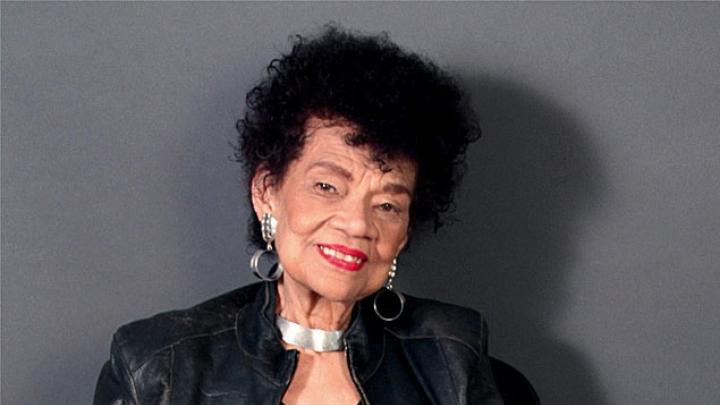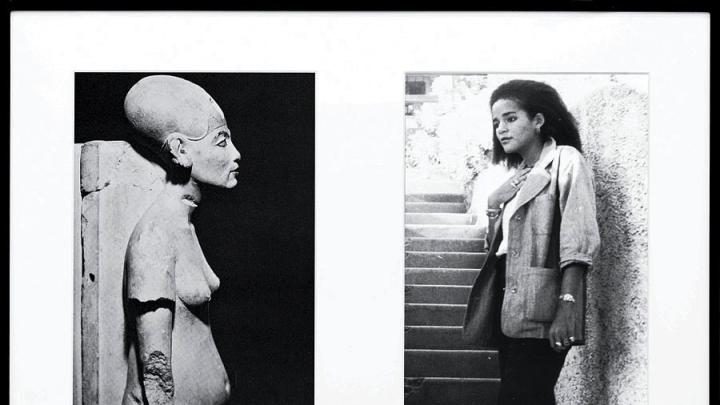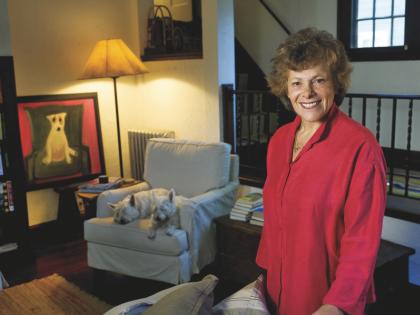Lorraine O’Grady first drew attention in 1980 as her own rebellious creation, Mlle Bourgeoise Noire. Thewhip-wieldingbeauty queen, gowned in white dinner gloves, showed up at events, guerilla-style, to protest racial and class divides, notably in the New York-centered art world. At 81, the conceptual artist and writer is still mining the timely themes of racial identity, cultural legacies, and what it means to be female—as seen in Lorraine O’Grady: Where Margins Become Centers, at the Carpenter Center for the Visual Arts (CCVA), October 29-January 10. (O’Grady will discuss her life and career on November 17 at the Harvard Art Museums.)
The Carpenter show offers selections from five bodies of work (dating from 1980 to 2012) and highlights O’Grady’s use of “images and ideas that are seemingly disparate, juxtaposing them to reveal and inform new perspectives,” says CCVA director James Voorhies. On display are diptychs from The First and the Last Modernists (2010) that pair Michael Jackson with Charles Baudelaire; a 2010/2011 video, Landscape (Western Hemisphere)—essentially close-up footage of O’Grady’s hair moving in the wind; and a photographic montage, The Fir-Palm (1991/2012), in which a tree rooted into a curvaceous brown body under a wide sky streaked with clouds forms a sensuous landscape.
In a work from the Miscegenated Family Album series (1980/1994),left, the young woman is Kimberly, a daughter of O’Grady’s late sister, Devonia Evangeline O’Grady; the statue is of Nefertiti. It is among 16 diptychs that stem from a 1980 O’Grady performancetitled Nefertiti/Devonia Evangeline; the diptychs compare the heterogeneity and legendary conflicts within ancient Egypt’s royal families to O’Grady’s own mixed-race heritage (she was born in Boston to middle- and upper-class Jamaican immigrants and graduated from Wellesley) and fraught relationship with Devonia. O’Grady works with personal and public images, collage, and text; she is not a traditional photographer, Voorhies notes. “She uses art as a means of cultural criticism.”










